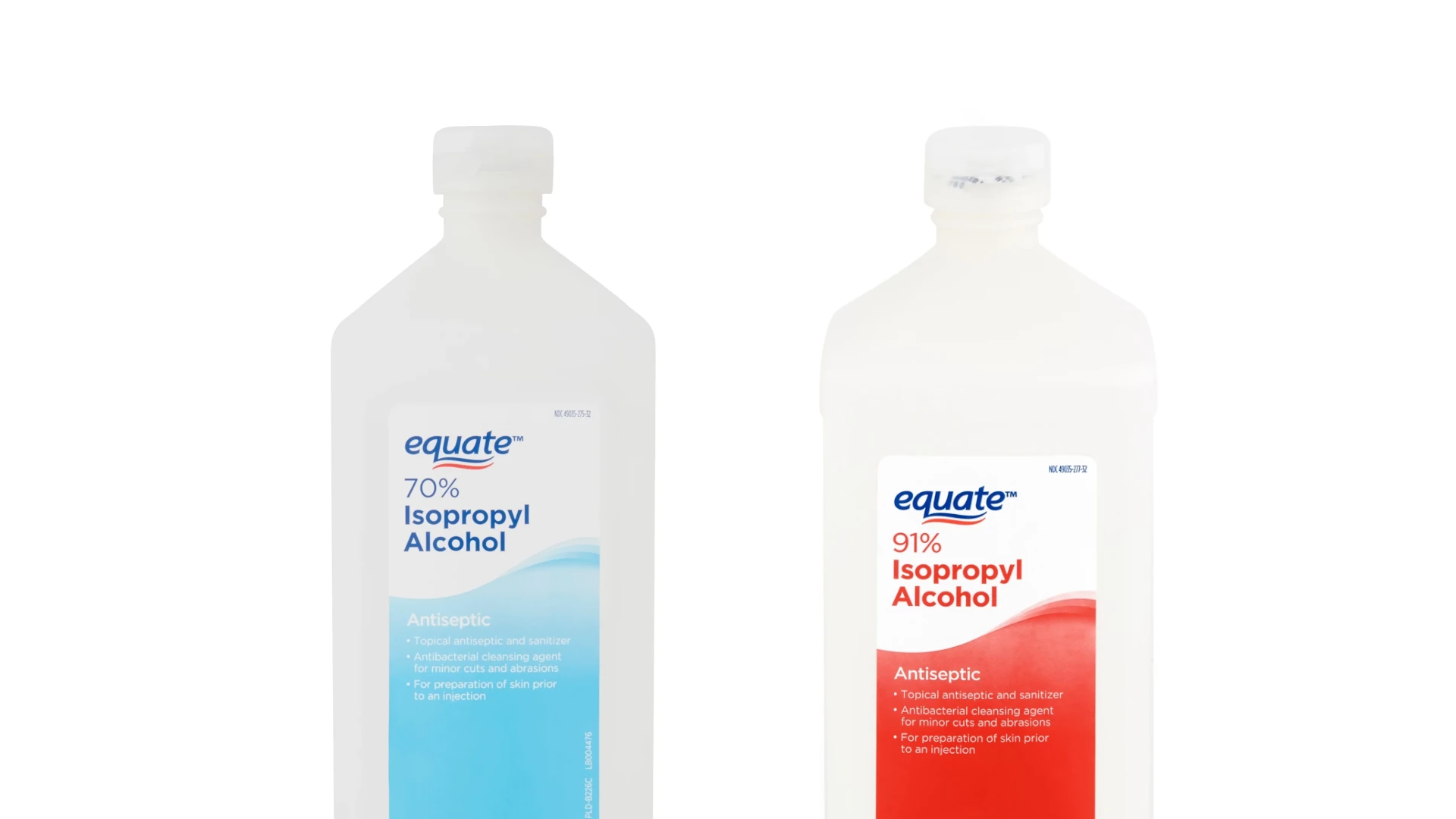Yes, you can pour small amounts of rubbing alcohol (think two bottles or less) that is at low concentrations (<25%) down the drain. The key is to dilute the rubbing alcohol with water to bring the concentration level down further and further and make it less harmful. Never pour isopropyl alcohol with a concentration >70% directly down the drain, as that could harm the plumbing or the environment. Additionally, if you need to dispose of a large quantity, you’ll want to recycle rather than pour it out. Special consideration is required to avoid damaging septic systems and the beneficial bacteria within (if your drain leads to one).
When working with household chemicals, it’s vital to dispose of them properly to ensure safety and protect the environment. Rubbing alcohol, which is commonly used as a disinfectant, can be particularly concerning when it comes to disposal. It’s important to know the appropriate methods of disposing of it, especially if you’re considering pouring it down the drain.
Handling Rubbing Alcohol Disposal
Rubbing alcohol (isopropyl alcohol) is a common household item, but what’s the best way to get rid of it? While pouring it down the drain may seem convenient, there are important factors to consider.
Is it Safe?
The safety of pouring rubbing alcohol down the drain depends on several things:
- Dilution: Small amounts of heavily diluted rubbing alcohol are generally safe for disposal down the drain with plenty of running water.
- Septic System: If you have a septic system, it’s best to avoid pouring rubbing alcohol down the drain, as it could disrupt the beneficial bacteria.
- Concentration: Highly concentrated rubbing alcohol is flammable and should never be poured down the drain.
Best Disposal Practices
Here’s a breakdown of disposal methods based on the concentration of the rubbing alcohol:
| Rubbing Alcohol Concentration | Recommended Disposal Methods |
|---|---|
| Less than 25% | Dilute heavily with water and pour down the drain |
| 25%-70% | Recycle or take to a hazardous waste facility |
| Above 70% | Never pour down the drain. Recycle or take to hazardous waste facility. |
Additional Tips
- Label containers: If you transfer rubbing alcohol to a different container, always label it clearly.
- Consider alternatives: Rubbing alcohol can evaporate quickly when left open, potentially minimizing the need for disposal.
By following these guidelines and considering the concentration of your rubbing alcohol, you can dispose of it safely and responsibly.
Key Takeaways
- Proper disposal of rubbing alcohol ensures safety and environmental protection.
- Small amounts of diluted low-concentration isopropyl alcohol can be poured down the drain.
- Large volumes or higher concentrations of rubbing alcohol require alternative disposal methods.
Understanding Rubbing Alcohol Disposal
Proper disposal of rubbing alcohol is crucial to prevent harm to the environment and human health. This section outlines key considerations and guidelines for disposing of rubbing alcohol responsibly, keeping safety and environmental well-being in mind.
Environmental Considerations
When you pour rubbing alcohol down a drain, it can affect water, animals, and plants. It’s vital to avoid causing harm to aquatic life and the environment. Small amounts of rubbing alcohol diluted with water might not cause significant damage, but larger volumes or frequent disposal can be harmful.
Health and Safety Risks
Rubbing alcohol is flammable, and improper disposal could raise risks of fire or explosion. Splashes and fumes can irritate skin and eyes or cause harm if inhaled. Using safety gear such as gloves and goggles is an important protocol when handling this substance.
Regulatory and Disposal Guidelines
The EPA and local regulations define proper disposal of rubbing alcohol, often classifying it as hazardous waste. Disposal at a designated hazardous waste facility is typically required. It’s crucial to follow these regulations to avoid legal penalties and environmental damage.
Impact on Plumbing and Septic Systems
Disposing of rubbing alcohol down the drain may risk clogging pipes, especially if not diluted properly. Septic systems can be particularly sensitive, as rubbing alcohol can kill beneficial bacteria important for breaking down waste.
Alternatives to Drain Disposal
When drain disposal is not advisable, consider alternatives like recycling or trash disposal in a sealed container, after diluting it with water. Contact local waste disposal services to learn about recycling options or if there’s a collection site for hazardous waste.
Best Practices for Handling Rubbing Alcohol
When dealing with rubbing alcohol, always:
- Read the label for concentration levels.
- Dilute with water before disposal.
- Dispose of in small quantities.
- Use protective gear like gloves and goggles.
Special Considerations for Small Quantities
For small amounts of expired or unwanted rubbing alcohol, dilution with water and disposal via household waste is usually acceptable. Check local guidance for any differing advice specific to your area.
Questions of Concentration and Dilution
The concentration of rubbing alcohol affects its volatility and the potential to cause harm. Diluting it reduces risks, making it safer to handle and dispose of. Always dilute with water following label recommendations or local guidelines.
Rubbing Alcohol as an Insecticide and Sanitizer
Rubbing alcohol works well as a sanitizer and can tackle pests like ticks. However, as a volatile organic compound (VOC), consider the impact on indoor air quality and use in well-ventilated areas.
Usage Tips for Specific Scenarios
Rubbing alcohol is great for cleaning windows or removing permanent markers. When using it, open windows to keep air fresh, and control the amount you’re using to avoid waste and unnecessary disposal issues.







